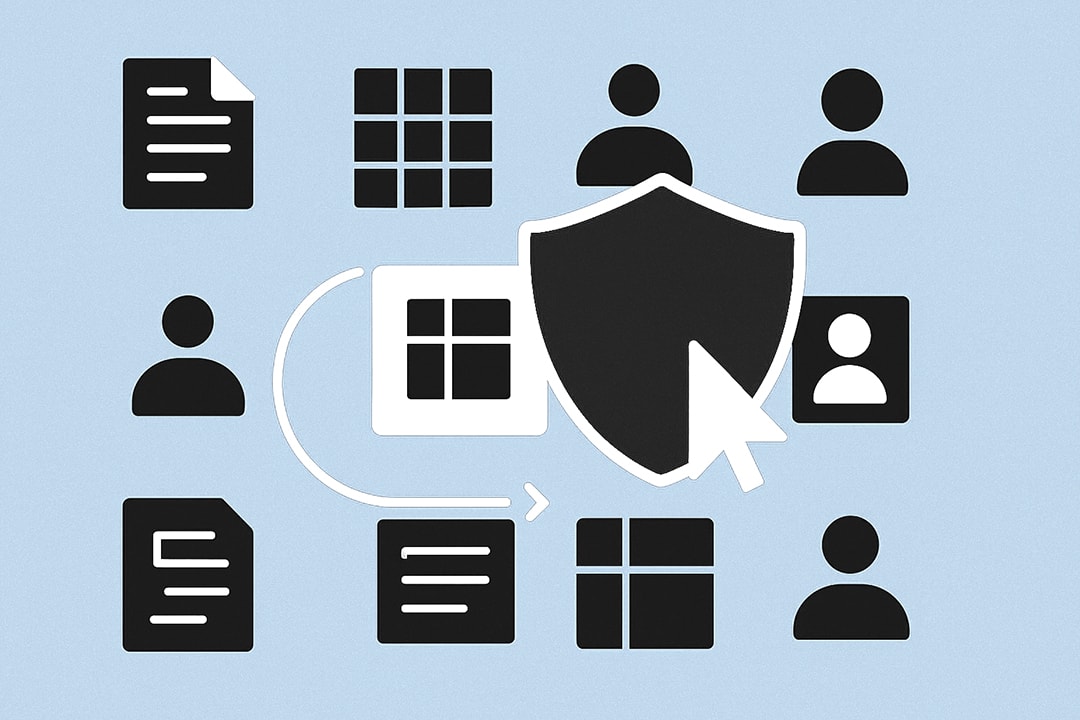How the New Rules of IT Leadership Are Redefining the CIO Role
Discover how CIOs and IT leaders are transforming their roles for the digital age. Learn the new rules of IT leadership, from agile teams to data-driven decision-making, and what it takes to drive real business value in today’s fast-changing landscape.

Why old-school IT leadership no longer works
For years, the classic IT playbook was simple. Stay in your lane, keep the systems running, and enforce policies from the top. This model made sense when IT’s main job was to prevent outages and keep the email flowing. But the ground has shifted.
Today’s IT landscape is a high-speed tangle of cloud migrations, SaaS sprawl, cybersecurity threats, and business units that buy tech with or without IT’s blessing. Trying to run IT like a military chain of command is a recipe for friction, not forward movement.
Rigid hierarchies, once prized for their clarity, now suffocate the organization’s need for speed and adaptability. Research from Gartner shows that only 22% of organizations still view IT as a pure “cost center,” yet in these environments, digital transformation efforts are 40% less likely to succeed compared to those led by collaborative, business-focused CIOs [Gartner].
Top-down models throttle innovation, creating bottlenecks where ideas stagnate waiting for approvals. When every decision trickles down from a single office, valuable context is lost, and smart people disengage. It’s no coincidence that the most digitally mature companies operate with flatter org charts and empowered teams who can respond instantly to change.
Why Digital Disruption Leaves Traditional CIOs in the Dust
The pace of change in technology is relentless. Customers expect seamless digital experiences, and competitors are just as likely to be cloud-native startups as industry stalwarts. According to McKinsey, 89% of boards now say digital business is embedded in all growth strategies, up from 52% just a few years ago [McKinsey].
Business units have gotten wise to the game. Over half of technology spending now happens outside the IT department, as product, marketing, and operations leaders buy their own tools and bypass the old IT gatekeepers [IDC].
This isn’t just a procurement headache—it is an existential threat to the traditional CIO role. If IT does not move at the speed of the business, it becomes invisible or, worse, irrelevant. The days when IT could say “no” and expect the enterprise to fall in line are over.
When technology is the business, the CIO can’t afford to be a traffic cop. The job now is to be a connector, an enabler, and a translator between technology and every other function in the organization.
How the New Stakes Have Changed the Game
Legacy IT leadership isn’t just outdated. It is actively risky. With cyber threats escalating and compliance demands growing more complex, a slow or siloed response can turn a minor incident into a headline-grabbing crisis. Harvard Business Review points out that organizations with slow, hierarchical IT decision-making are 50% more likely to experience damaging security or compliance failures [Harvard Business Review]. This isn’t theory—it’s a warning from the frontlines.
The reality is that CIOs are now under more scrutiny than ever. They are expected to be both visionaries and protectors, able to drive digital innovation without sacrificing uptime or security. The pressure to deliver is real, and the margin for error is shrinking. Old-school leadership models simply cannot keep up with the dual demands of rapid innovation and operational resilience.
Why IT Leaders Must Rethink Their Approach—Now
The evidence is overwhelming: command-and-control IT is a relic. Today’s CIOs need to adapt or risk getting left behind. This means relinquishing some control, fostering trust, and building teams that can learn and pivot quickly. It means moving from a mindset of risk aversion to one of calculated risk-taking, always with the business outcome in mind.
It’s not an easy shift. The allure of order and predictability is strong, especially when the consequences of failure are so visible. But the organizations that thrive are those where IT leads from the center, not the top. These are the places where CIOs are partners in growth, not just keepers of the firewall.
The new rules aren’t coming—they’re already here. And for IT leaders, the only way forward is to let go of the past and embrace a new playbook built on adaptability, influence, and business alignment.
What defines the new IT leader
Why adaptability outranks authority
In the new era of IT, adaptability has overtaken positional authority as the defining trait of effective leadership. Today’s CIO is expected to lead through shifting priorities, ambiguous requirements, and ever-changing risks. According to the Gartner CIO Agenda, 74% of technology leaders rank “leading through uncertainty and ambiguity” as their core competency [Gartner].
In practice, this means being comfortable with incomplete information, adjusting strategies on the fly, and empowering teams to solve problems independently. The best IT leaders foster organizations that can pivot quickly—whether that’s switching cloud providers, retooling a product roadmap, or shoring up cybersecurity in response to a new threat. Adaptability isn’t just a mindset; it’s an organizational muscle that determines who thrives and who stalls out in the face of constant change.
How cross-functional communication builds real influence
Gone are the days when IT leaders could operate in isolation or speak only in technical jargon. The modern CIO spends as much time in conversations with marketing, finance, and operations as with architects and engineers.
McKinsey’s research shows that only 20% of digital transformations succeed without strong cross-functional collaboration, but that number jumps to 60% when IT leads the alignment [McKinsey]. What sets the new IT leader apart is the ability to translate technical complexity into business value stories that resonate with executives and frontline teams alike.
Storytelling is not fluff—it is a strategic skill. CIOs who frame technology initiatives in terms of revenue, risk, or customer experience are three times more likely to be seen as strategic partners, according to Forbes [Forbes]. The ability to bridge silos, build coalitions, and influence outcomes through clear, empathetic communication is now as important as technical know-how.
Why data-driven decision-making is the new north star
Gut instinct and tribal knowledge no longer cut it. Leading CIOs are data evangelists, championing evidence-based decision-making at every level. Harvard Business Review reports that organizations with data-driven IT leaders are 23x more likely to acquire customers and 19x more likely to be profitable [HBR].
This means investing in analytics, building robust data governance, and making sure that strategic bets are backed by real metrics, not just hope.
The new IT leader insists on transparency, from project performance dashboards to predictive analytics for resource planning. They push teams to ask, “What does the data say?” before making high-impact calls, and they use that data to drive alignment with business partners. This shift from opinion to evidence is a cultural transformation and a competitive advantage.
How empathy and emotional intelligence become strategic assets
It’s not enough to be a technical expert or an operational mastermind. The best IT leaders understand that trust, psychological safety, and emotional intelligence are critical for building resilient, high-performing teams.
MIT Sloan research found that 82% of CIOs now consider empathy a top leadership requirement [MIT Sloan]. Teams led by emotionally intelligent CIOs are nearly five times more likely to hit their targets.
This is about more than morale. In high-stakes environments, where burnout and pressure are facts of life, leaders who listen, create space for dissent, and foster learning from failure unlock discretionary effort and innovation. Empathy is the glue that holds cross-functional initiatives together and the safety net that enables teams to take calculated risks. It’s also the antidote to the “department of no” stereotype—transforming IT from a blocker to an enabler.
How successful CIOs are putting these rules into practice
Why agile, collaborative teams outperform the old models
The blueprint for high-performing IT teams has changed. Hierarchical silos and rigid reporting lines are being replaced with flatter org charts and empowered, cross-functional squads. Successful CIOs are the architects of these new structures, breaking down barriers and championing agile methodologies that put speed and ownership in the hands of the people who deliver value.
Nationwide Insurance’s “agile at scale” journey is a textbook case. By shifting to autonomous teams and iterative delivery, they cut the time-to-market for new products by 45 percent [CIO.com]. This isn’t just about adopting Scrum or Kanban. It’s a cultural reset—one where failure is seen as an opportunity to learn, and success is measured by outcomes, not hours logged.
How continuous learning keeps teams and tech relevant
If change is the only constant, learning must be continuous. The most effective CIOs invest in upskilling—not as a perk, but as a survival strategy. Gartner reports that 72% of IT shops now have formal programs for digital, data, and cloud fluency. The approach is pragmatic. It’s not about certifications for their own sake, but about building the muscle memory to adapt to new architectures, platforms, and threats.
Peer learning and mentorship are crucial. High-performing organizations pair experienced architects with up-and-coming engineers, facilitate cross-team knowledge sharing, and forge partnerships with external experts. This creates a virtuous cycle: the more the team learns, the more they can teach, and the faster the organization can move.
Why business outcomes trump technology for its own sake
The days of “tech for tech’s sake” are fading fast. Modern CIOs ruthlessly align IT initiatives with enterprise priorities and customer value. OKRs (Objectives and Key Results) and outcome-based KPIs are the new standard. According to Forbes, 76% of CIOs now use these frameworks to ensure their teams focus on what matters to the business [Forbes].
This isn’t just a reporting exercise. It’s about shifting the conversation from “what are we building?” to “why are we building it?” and “how will we know it’s working?” CIOs who make this shift find that their teams deliver 2x the ROI on technology investments compared to those who chase the latest shiny object without a business case [Deloitte].
How Influence Replaces Control in the Modern IT Playbook
The most effective CIOs lead less by fiat and more by influence. They build coalitions, align stakeholders, and shape enterprise architecture by building relationships, not just enforcing policies. Harvard Business Review found that CIOs who prioritize influence over control accelerate digital transformation by 40 percent [Harvard Business Review].
Influence also means storytelling—translating technical tradeoffs into business impact, framing risks in terms of opportunity, and making sure IT’s wins are visible to the boardroom. This approach earns trust, secures buy-in, and makes IT an indispensable partner in strategy, not just execution.
From playbook to practice—and what comes next
What connects these practices is a relentless focus on adaptability, learning, and business value. The most successful CIOs aren’t just theorizing about the new rules of IT leadership—they are living them, every day, through the teams they build, the decisions they drive, and the influence they wield.
But knowing the new rules and putting them into practice is only part of the challenge. The next step is even more demanding: leading the organization into what’s next. True transformation requires CIOs to step fully into the role of change agent and integrator, orchestrating business and tech strategy at every level. That’s where the journey leads—and where the next section begins.
What CIOs need to do next
Why CIOs must embrace the change agent role
It’s not enough for CIOs to keep pace with change—they need to drive it. The modern CIO is no longer just the head of IT but the orchestrator of digital transformation across the business. McKinsey finds that 90% of CEOs now expect the CIO to lead enterprise-wide digital strategy, not just IT operations [McKinsey].
This means stepping out of the server room and into the boardroom, aligning technology with revenue, customer experience, and long-term growth. CIOs must be integrators, breaking down silos and connecting dots between product, marketing, finance, and operations. They need to “own” business outcomes—translating vision into action, and action into measurable results.
How investing in data literacy future-proofs the organization
Data is the lifeblood of every modern business, but too few organizations have a culture that truly leverages it. Only a quarter of employees globally feel confident in their data skills, according to Harvard Business Review [HBR]. The next imperative for CIOs is to democratize data—arming every function with the tools, training, and governance to make informed decisions.
This is about more than dashboards. It requires embedding data-driven thinking into hiring, rewards, and daily work. CIOs should champion data fluency programs, partner with HR on analytics upskilling, and ensure that every strategic decision is grounded in evidence, not just instinct. A data-literate workforce is more agile, creative, and accountable—a true force multiplier for digital transformation.
Why leadership brand matters more than ever
The days of the “invisible CIO” are gone. In today’s climate, the most effective technology leaders are visible, trusted, and approachable. They model adaptability, show vulnerability, and invite feedback—not as a sign of weakness, but as proof that learning is a team sport. MIT Sloan recommends that CIOs actively cultivate a leadership brand built on trust and openness [MIT Sloan].
This means being present in the organization—hosting open forums, joining cross-functional workshops, and showing up when things get tough. The best leaders let teams see both the strategy and the scars, creating an environment where experimentation and shared ownership are valued. When the CIO leads with authenticity, it gives everyone else permission to do the same.
How to measure what really matters
It’s time to move beyond uptime and ticket closures as the only measures of IT success. Modern CIOs need a dashboard that connects technology to business impact and people outcomes. That means tracking how IT investments drive customer satisfaction, revenue, or speed to market. It means quantifying the impact of new tools on employee productivity and engagement.
It also means celebrating wins—big and small—and treating failures as learning opportunities, not career-ending events. Gartner and Forrester both stress the importance of iterative measurement, where OKRs and KPIs are used to guide action, not just report on it [Forrester, Gartner]. The CIO should be the storyteller-in-chief, making sure the value of IT is visible and tangible at every level of the organization.
The new rules of IT leadership are demanding, but they are also a call to action. CIOs now have a seat at the table—and a mandate that extends far beyond technology. The most successful will be those who step boldly into the role of change agent, build a culture of data-driven learning, lead with trust, and measure what matters. The journey is ongoing, but the opportunity has never been greater. For CIOs who are ready, the future isn’t just something to manage—it’s something to shape.
FAQ
What are the new rules of IT leadership for CIOs?
The new rules of IT leadership focus on adaptability, cross-functional influence, data-driven decision-making, and emotional intelligence. Modern CIOs are expected to lead digital transformation, break down silos, and align technology with business outcomes rather than just managing IT operations.
Why is the traditional command-and-control approach in IT leadership no longer effective?
Traditional command-and-control IT leadership is too rigid for today’s fast-paced digital environment. It slows innovation, creates bottlenecks, and fails to empower teams. Modern organizations need collaborative, agile IT leaders who can respond quickly to change and drive business value.
How can CIOs build high-performing agile IT teams?
CIOs can build high-performing agile teams by flattening org charts, empowering cross-functional squads, and fostering a culture of continuous learning. Adopting agile methodologies and focusing on business outcomes enables teams to deliver value faster and adapt to changing priorities.
What skills define a successful modern CIO?
A successful modern CIO combines technical expertise with business acumen, adaptability, strong communication skills, and high emotional intelligence. They are data-driven, influential across the organization, and focused on enabling growth, innovation, and customer value.
How should CIOs measure IT success in the digital age?
CIOs should measure IT success by tracking business impact, such as customer satisfaction, revenue growth, speed to market, and employee productivity. Relying solely on traditional metrics like uptime is outdated; today’s CIOs link technology investments directly to strategic business goals.





